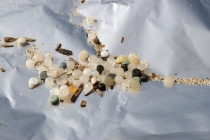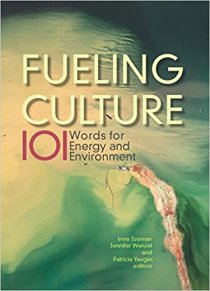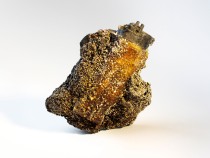Category Archives: Articles and essays

In Conjunction with Light: The Plastics Exhibition at the Art Gallery of Ontario, 1967
I wrote this article as part of the Art Museum at the University of Toronto’s digital spotlight series for the exhibition Plastic Heart: Surface All the Way Through. Excerpt: “In Fall 1967, the Women’s Committee at the Art Gallery of

In Conjunction with Light: The Plastics Exhibition at the Art Gallery of Ontario, 1967
I wrote this article as part of the Art Museum at the University of Toronto’s digital spotlight series for the exhibition Plastic Heart: Surface All the Way Through. Excerpt: “In Fall 1967, the Women’s Committee at the Art Gallery of

Secret Stash: Textiles, Hoarding, Collecting, Accumulation and Craft
I’m excited to have an essay in this wonderful new volume edited by Anthea Black and Nicole Burisch. “Secret Stash: Textiles, Hoarding, Collecting, Accumulation and Craft.” In The New Politics of the Handmade: Craft, Art and Design. Anthea Black and

Secret Stash: Textiles, Hoarding, Collecting, Accumulation and Craft
I’m excited to have an essay in this wonderful new volume edited by Anthea Black and Nicole Burisch. “Secret Stash: Textiles, Hoarding, Collecting, Accumulation and Craft.” In The New Politics of the Handmade: Craft, Art and Design. Anthea Black and

A comprehensive investigation of industrial plastic pellets on beaches across the Laurentian Great Lakes and the factors governing their distribution
In 2018-19, the Synthetic Collective sampled from 66 beaches on the shores of the Laurentian Great Lakes. We collected 12,595 industrial plastic pellets from 66 10x1m sq quadrats. Also known as nurdles or “mermaids’ tears,” pellets are the feedstock of

A comprehensive investigation of industrial plastic pellets on beaches across the Laurentian Great Lakes and the factors governing their distribution
In 2018-19, the Synthetic Collective sampled from 66 beaches on the shores of the Laurentian Great Lakes. We collected 12,595 industrial plastic pellets from 66 10x1m sq quadrats. Also known as nurdles or “mermaids’ tears,” pellets are the feedstock of

Fast Fashion/Slow Art
“The Afterlife of Clothing.” Guest essay for the exhibition Fast Fashion/Slow Art. Bibiana Osler and Phyllis Rosenzweig, eds. Washington DC: Corcoran Gallery, 2019. As essay that I wrote on microfibers, synthetic textiles, and art was published in the catalogue for

Fast Fashion/Slow Art
“The Afterlife of Clothing.” Guest essay for the exhibition Fast Fashion/Slow Art. Bibiana Osler and Phyllis Rosenzweig, eds. Washington DC: Corcoran Gallery, 2019. As essay that I wrote on microfibers, synthetic textiles, and art was published in the catalogue for

Embracing an Interdisciplinary Approach to Plastics Pollution Awareness and Action
Led by Sara Belontz, the Synthetic Collective published their first co-written paper. It’s not open source yet, but will be soon (or, drop me a line and I’ll send you a copy). Sara Belontz, Patricia Corcoran, Heather Davis, Kathleen Hill,

Embracing an Interdisciplinary Approach to Plastics Pollution Awareness and Action
Led by Sara Belontz, the Synthetic Collective published their first co-written paper. It’s not open source yet, but will be soon (or, drop me a line and I’ll send you a copy). Sara Belontz, Patricia Corcoran, Heather Davis, Kathleen Hill,

No Small Matter: Micromuseums as Critical Institutions
with Helen Gregory. “No Small Matter? Micromuseums as Critical Institutions,” RACAR (special issue: Critical Curating) 43.2 (2018), pp. 89-101. Focusing on three micro-institutions located in Canada, each with specifically challenging and/or political mandates, this article examines the critical potential of

No Small Matter: Micromuseums as Critical Institutions
with Helen Gregory. “No Small Matter? Micromuseums as Critical Institutions,” RACAR (special issue: Critical Curating) 43.2 (2018), pp. 89-101. Focusing on three micro-institutions located in Canada, each with specifically challenging and/or political mandates, this article examines the critical potential of

Critical Museum Theory/Museum Studies in Canada
Lianne McTavish with Susan Ashley, Heather Igloliorte, Kirsty Robertson, and Andrea Terry. “Critical Museum Theory/Museum Studies in Canada: A Dialogue,” Acadiensis 46.2 (2017), pp. 223-41. In 2017 I had the chance to be a part of this co-written conversation about

Critical Museum Theory/Museum Studies in Canada
Lianne McTavish with Susan Ashley, Heather Igloliorte, Kirsty Robertson, and Andrea Terry. “Critical Museum Theory/Museum Studies in Canada: A Dialogue,” Acadiensis 46.2 (2017), pp. 223-41. In 2017 I had the chance to be a part of this co-written conversation about

Textiles
“Textiles.” In Fueling Culture: Politics, History, Energy. Imre Szeman, Jennifer Wenzel and Patricia Yaeger, eds. Fordham University Press, 2016, pp. 353-56. A short piece that I wrote on textiles and oil is included in this volume. “…textiles are the most

Textiles
“Textiles.” In Fueling Culture: Politics, History, Energy. Imre Szeman, Jennifer Wenzel and Patricia Yaeger, eds. Fordham University Press, 2016, pp. 353-56. A short piece that I wrote on textiles and oil is included in this volume. “…textiles are the most

Review of Tributes and Tributaries
“The History of Contemporary Survival,” a review of the AGO’s exhibition “Tributes and Tributaries,” that I wrote for Topia Journal, can be read here.

Review of Tributes and Tributaries
“The History of Contemporary Survival,” a review of the AGO’s exhibition “Tributes and Tributaries,” that I wrote for Topia Journal, can be read here.

Plastiglomerate
Plastiglomerate. e-flux 78 (December, 2016) ….”In 2012, geologist Patricia Corcoran and sculptor Kelly Jazvac travelled to Kamilo Beach, following a tip from oceanographer Charles Moore that the beach was covered in a plastic-sand conglomerate. Moore suspected nearby volcanoes were to

Plastiglomerate
Plastiglomerate. e-flux 78 (December, 2016) ….”In 2012, geologist Patricia Corcoran and sculptor Kelly Jazvac travelled to Kamilo Beach, following a tip from oceanographer Charles Moore that the beach was covered in a plastic-sand conglomerate. Moore suspected nearby volcanoes were to
You must be logged in to post a comment.